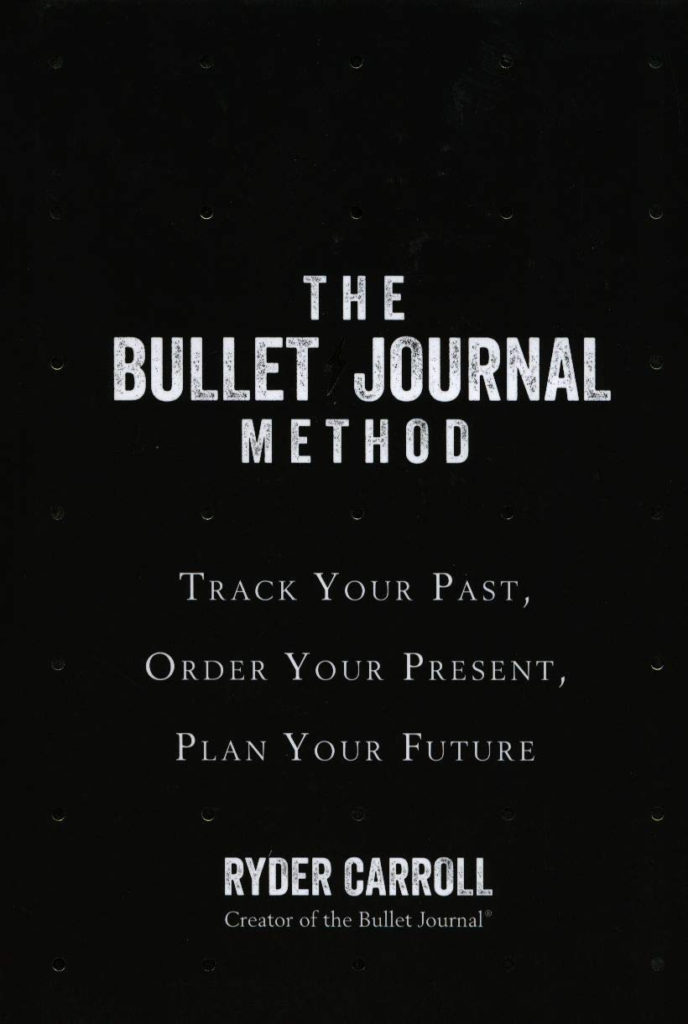
Here at Hunterskill Recruitment, we’re committed to providing you with the best resources for your job search and your working life once you’ve found it. That’s why we’ve put together this guide to one of productivity’s greatest hacks: The Bullet Journal.
Designed and refined by New York based Ryder Carroll, the Bullet Journal Method is a way of organising your life on a micro and macro level. In his words, the journal is designed to ‘help you track the past, organize the present, and plan for the future.’ More than just a framework, it is a way to introduce mindfulness into your life through a return to analogue thinking. To summarise its process, the Bullet Journal works on the notion that logging your goals and actions on paper will provide a concrete way to more completely hold your life into account.

How will this help with the job search?
Opportunities are always there if you look hard enough. Having a process in mind and a roadmap to pursuing them is another question. Whilst many sites will helpfully allow you to digitally save job opportunities. While this may be useful for providing easy access to these listings, many of these listings remain un-pursued. Merely clicking the ‘save button’ will often just allow us to forget about it in search of new job listings.
This is where paper comes in. It sounds hokey, but writing it down on paper will a) commit whatever you find more firmly into your mind and b) keep all of your finds into one long list where they can be crossed off. The act of writing something down is a tiny commitment that will lead to the bigger commitment of the application process. Wrote 7 leads down but can’t even be bothered to write this other one? Don’t worry about it! If you didn’t even want to write it down, why do you think you’d even want to apply. It would just be clutter in your mind. And that’s another effect: Less clutter. It’s not just about accomplishing more, it’s about streamlining the process to work at your best.
So, how can we turn this streamlined mindset into results? It’s all in…
The Method
The foundation of The Bullet Journal Method is the logging of the necessary information. Before you’ve even written something down, your mind has made a decision of what opportunities and tasks are necessary to you. Collections are the method’s way to keep all of your opportunities in one place. To put it simply, give one page the title ‘Job Listings’ and only record the opportunities you find there. Sounds obvious, doesn’t it? Oftentimes these opportunities get lost because we forget about them, but having one journal with all of your information sorted by a title like this is a more effective way of setting up our minds to take action.
This brings us to taking action. Once we have the necessary information sorted in one place, now is the time to set goals. The goal ‘get a job’ sounds simple, doesn’t it? It’s certainly somewhere we’d like to get to. ‘Go to Scotland’ sounds just as simple. However, what we find is that while it’s a realistic goal on a wider scale, the process of getting a job or going to Scotland is not so straightforward. It’s searching for a job, applying, writing a CV, writing a cover letter, filling out a form, preparing for the interview etc. That’s why we need to break up the process into specific and wider goals.
It’s About Time
The Bullet Journal Method recommends you set goals bearing in mind three different periods of time: Years, months, days.
Yearly log: The yearly log asks you to divide four pages into thirds. This leaves you with twelve segments into which you will write down the months. You can set wider goals here. If you feel as if you can complete your search this month, you can write ‘Get a job’ this month. If you feel like it will take longer, have a real think about what you need to do to complete the process and write the answer in that month.
Monthly log: In the monthly log, you will write down the numbers one to however many days there are in that month. This is where you can be a little bit more focused and plan ahead. You can record job interview dates and application deadlines here.
Daily Log: This is where the real action happens. The wider goal of completing the job search can be overwhelming. It’s much more manageable to break up this process into the smaller tasks you have to complete. The key is to have a realistic grasp of what you can do in a single day and stick to it. If you know you will only be able to complete four applications in the time you have, write down those four applications into your daily log. Make each application its own bullet point and crossing them off the list one by one will be a satisfying marker of your progress.
A note on completing daily tasks
Oftentimes, we can get so much done in the day but we can still feel unsatisfied with our progress. This is because our mind is focused only on the long term. Whilst it’s vital to have that wider goal in mind, our day-to-day mental health becomes strained as a result. As we know, accomplishing those wider goals is accomplished by completing those daily tasks. If we feel complete during the day, our anxieties about our accomplishments in the day can be put to rest and we’re better mentally equipped to complete the tasks of the next day too.
Ryder Carroll’s own website goes into more depth on the process of logging your daily tasks and keeping collections to organise your notes and goals and keep track of all aspects of your life. For now, we’ve decided to equip you with the essentials to complete the job search. However, it’s worth checking out this website and Ryder’s book to find out what the method can do for not just your work but social life, leisure time and wider personal goals. For now, we hope we’ve helped you organise your tasks, goals and daily activities to have a clearer understanding of your own search process.